May 13, 2021
Class still in session at former Aizu samurai school in Fukushima Pref.
Gallery - Aizu Hanko Nisshin-kan, Aizuwakamatsu City, Fukushima Pref.
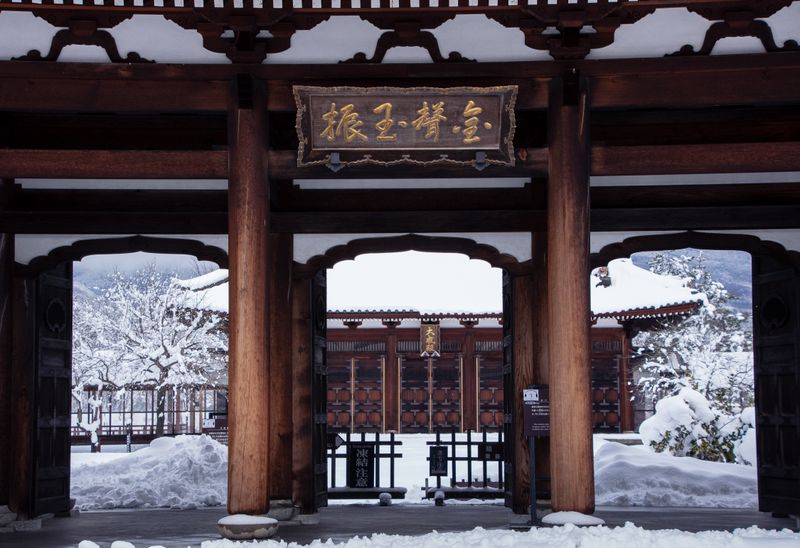
At Aizu Hanko Nisshin-kan, a former school for children of samurai in what is today the city of Aizuwakamatsu, Fukushima Prefecture, class remains in session giving visitors an experience of education under the ruling Aizu clan samurai.
A large board outside the entrance to the reconstructed Aizu Hanko Nisshin-kan lists the “jyu no okite,” a blunt reminder to students, past and present, of the rules that must be followed after entering the school (and after graduation) through the impressive Geki-mon gate.
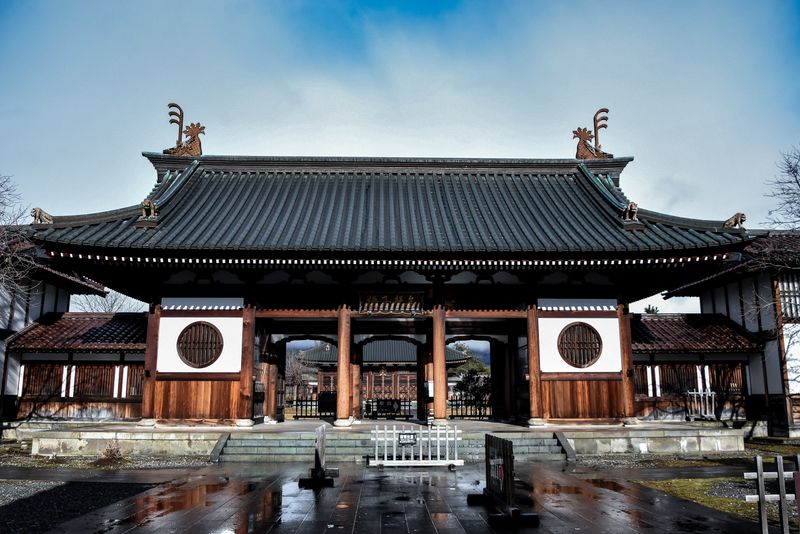
(Geki-mon gate, Aizu Hanko Nisshin-kan, photo taken 2020)
Anyone who has ever felt a little sheepish about walking down a street in Japan while munching on a snack might be interested to note that one of the rules reads, “you must not eat outside.”
Punctuating the rest of the rules, which include such classics as “you must not tell lies,” and “bow to your seniors,” the list is made complete with, “you must not do what you must not do.” It reads like the kind of all-encompassing, logically tight riposte essential to parents and teachers weary of dealing with recalcitrant and cocky youths. The Edo-era equivalent of, “because I said so.”
One could be forgiven for thinking, though, that even a water-tight “because I said so” might not be enough to suppress persistent questioning during the classes at Aizu Hanko Nisshin-kan which taught “seppuku,” or ritual suicide by sword.
“They would have understood from their fathers that the samurai have to come to terms with their own death, so it wouldn’t have been so upsetting for them,” our guide explained during a tour of the school in February this year. One of the jyu no okite appeared to have been hard and fast for the students here then, “you must not be cowardly.”
At this stage perhaps a qualification of the headline is required -- while class, of a kind, is still in session at the Aizu Hanko Nisshin-kan, learning seppuku is thankfully absent from the curriculum for today’s visiting students.
Aizu Hanko Nisshin-kan, in its original incarnation, was established in the early 19th century at a site west of Tsuruga Castle, in what is now central Aizuwakamatsu, a city rich in samurai heritage and one that is regarded as having been a last stronghold for the samurai leading up to their demise during the Meiji Restoration later that century.
The school was established on the suggestion of Harunaka Tanaka, chief retainer to the lord of the then Aizu Domain Katanobu Matsudaira. Tanaka wanted to place greater emphasis on education. Students entered Aizu Hanko Nisshin-kan from the age of 10.
The facility is said to have been one of the finest of over 300 clan schools across Japan at that time, on accounts of its size and the quality of class materials the students studied with. Classes covered astronomy, shodo (Japanese calligraphy), and etiquette, among others.
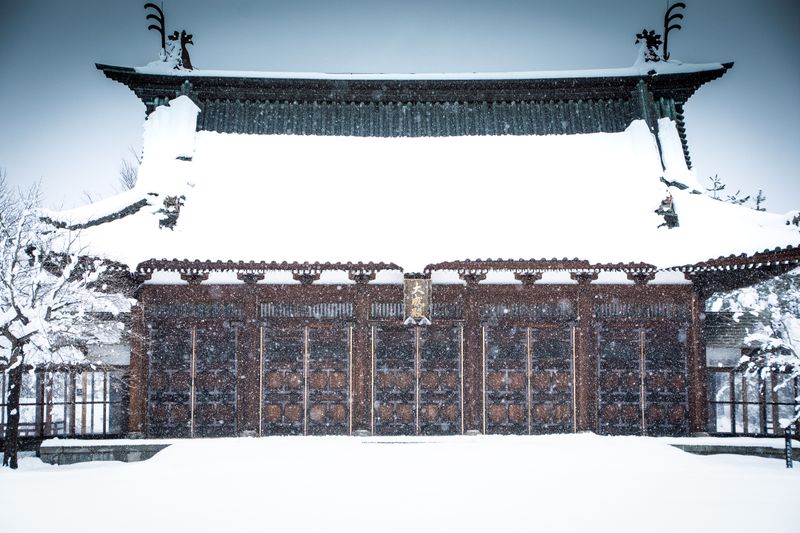
(Aizu Hanko Nisshin-kan, Aizuwakamatsu City, photo taken 2021)
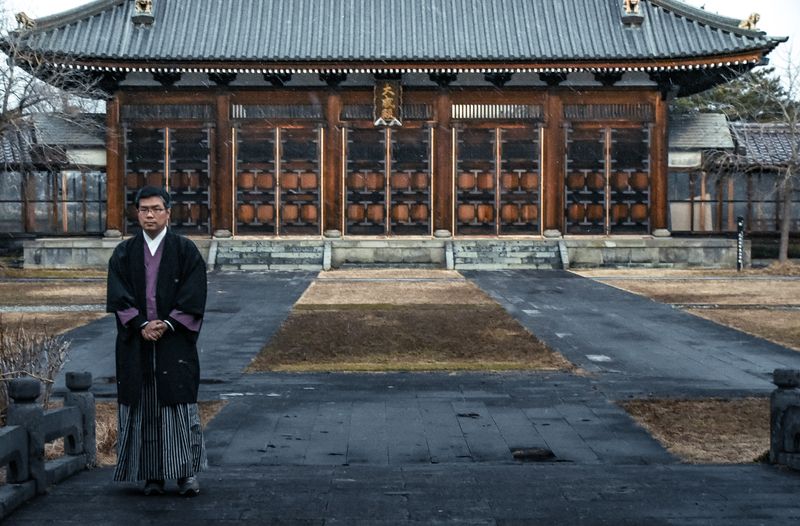
(Aizu Hanko Nisshin-kan, Aizuwakamatsu City, photo taken 2020)
A prominent feature of today’s reconstruction of the school is the central swimming pool, which appears more like a sculpted pond. The original pool was the oldest in Japan and in it students would train by treading water in full armor, helmet and all, according to the school.
Assistant language teachers working at schools in Japan who have marveled at the efficiency and variety of kyushoku or school lunches may be interested to learn that Aizu Hanko Nisshin-kan was the first school in Japan to have served kyushoku.
While there is no kyushoku on the menu at the school today, visitors can try their hand at a number of experiences shared with the students of that time. Among these is zazen, a Buddhist meditative discipline practiced by many samurai.
Kyudo, the Japanese martial art of archery, is another experience available to Nisshin-kan visitors. During our visit, instructors told us of the importance of bowing before and after each volley of our arrows, reflecting the strict code of etiquette and discipline that even the children of samurai had to live by. We were also told that hitting the target was not, in fact, the ultimate object of kyudo, much to our relief no doubt.
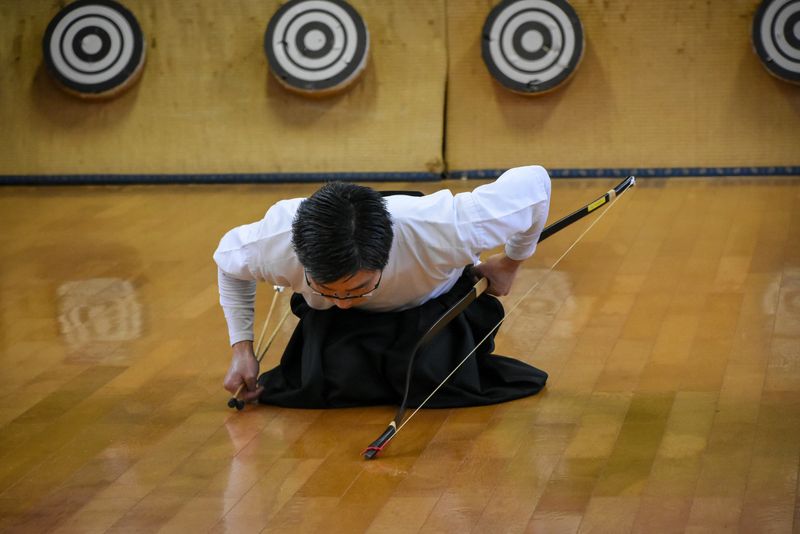
(Kyudo experience, Aizu Hanko Nisshin-kan, Aizuwakamatsu, photo taken 2020)
Under the rule of the Aizu clan, students at the Nisshin-kan were grouped according to neighborhood. In this way younger students could be grouped with their elders and thus learn appropriate respect and manners, a key educational policy of the clan.
Among the students at the school were members of the Byakkotai -- young samurai who fought for the Aizu clan -- who would eventually commit ritual suicide during the Boshin War. The story of these 19 Byakkotai echoes around the Aizu region to this day. The site of their suicide, Iimoriyama, a small hill east of downtown Aizuwakamatsu overlooking Tsuruga Castle, is marked with a sombre row of graves stones, one for each of the young samurai who died.
The Boshin War (1868 - 1869) was the sharp and bloody edge of the Meiji Restoration, Japan’s transition from shogunate to practical imperial rule. Remaining loyal to the shogunate, even after he was ousted from power, the samurai of Aizu met their end during the war in November of 1868. The war also brought about an end to the Nisshin-kan which was destroyed by fire. The facility was rebuilt in its current location in the city’s northern suburbs in 1987.
Japan’s symbolic swapping the samurai and their swords for politicians in command of gun-toting armies left plenty of blades lying around unused, according to Hiroyuki Tsukamoto a togishi, or master of sword polishing.
Tsukamoto (34) gave a special demonstration of katana-togi sword polishing during our visit to the Nisshin-kan, telling us that along with sword-makers and knowledgeable collectors his main clients are people who just happened to find an old sword gathering dust in the attic.
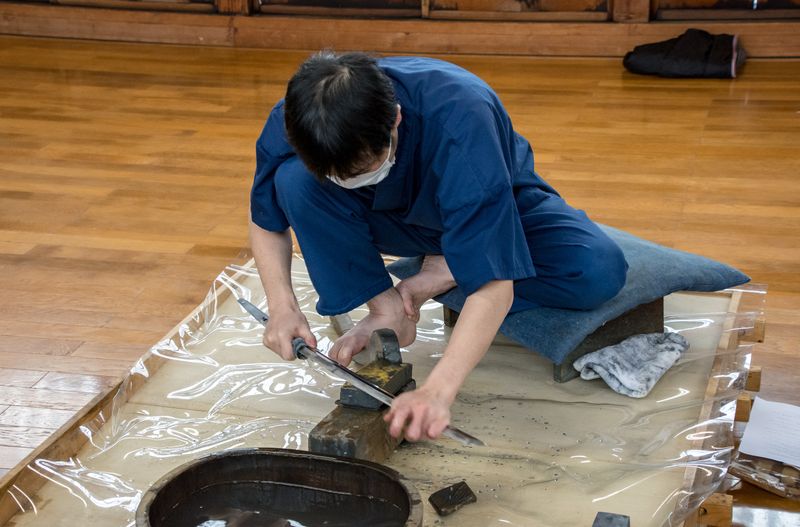
(Sword polisher Hiroyuki Tsukamoto, photo taken 2021)
Coming from a family of sword makers and polishers, Tsukamoto’s grandfather was a katana-kaji (swordsmith), his older brother is a sayashi, or master of making sheaths for swords. It was Tsukamoto’s father though, (a togishi himself) who initially taught him katana-togi before he went on to sharpen his skills under the tutelage of an expert. According to Tsukamoto’s quick calculation he is one of only two full-time professional practitioners in Fukushima Prefecture.
"Most young people aren’t aware that such work exists. There are some who are interested, but with no vocational school in which to learn they don’t know how to get started," Tsukamoto said.
It’s a hard world to break into though and Tsukamoto’s suggestion that we invest in a sword of our own to polish and through that showcase our skills, was met with a giggle -- our attempts at polishing during the demonstration had proved laughable. Nor did we have a spare 600,000 yen up to which blades can fetch, despite Tsukamoto telling us that “anyone can buy a sword … as long it’s not designated a national treasure.”
Word-of-mouth from satisfied and knowledgeable customers is key to increasing business, according to Tsukamoto. New clients have tested the togishi on his knowledge first to see whether or not they want to give him their custom.
"I need to be able to recognize the finish of swords from every region of Japan, across the eras,” Tsukamoto said as he described the importance of achieving an era-appropriate finish through polishing. An eye for a blade and the human touch to achieve the desired polish is the only way to go though. “Machines would polish away the key features of the blade,” he said.
An eye for a blade together with a little bit of the discipline that was once taught at the Nisshin-kan looks like it wouldn’t go amiss in the world of the togishi either. In the near freezing temperatures of a school hall Tsukamoto appeared oblivious to the cold polishing water dripping on his bare feet throughout the demonstration. Indeed, Tsukamoto’s apparently unbound enthusiasm for his chosen profession was almost enough to warm the otherwise frigid February atmosphere.
"It’s so much fun. Even though there are times when my back is aching and I wonder, "What am I doing?" I envisage the final look of the sword and then to realize that, little by little, is really satisfying," he said.
Related:



0 Comments